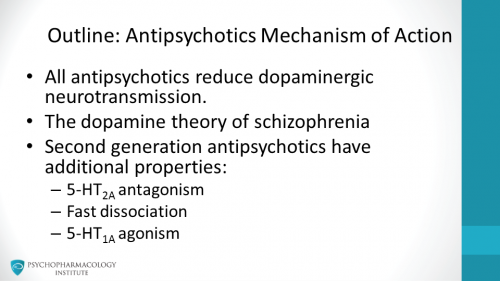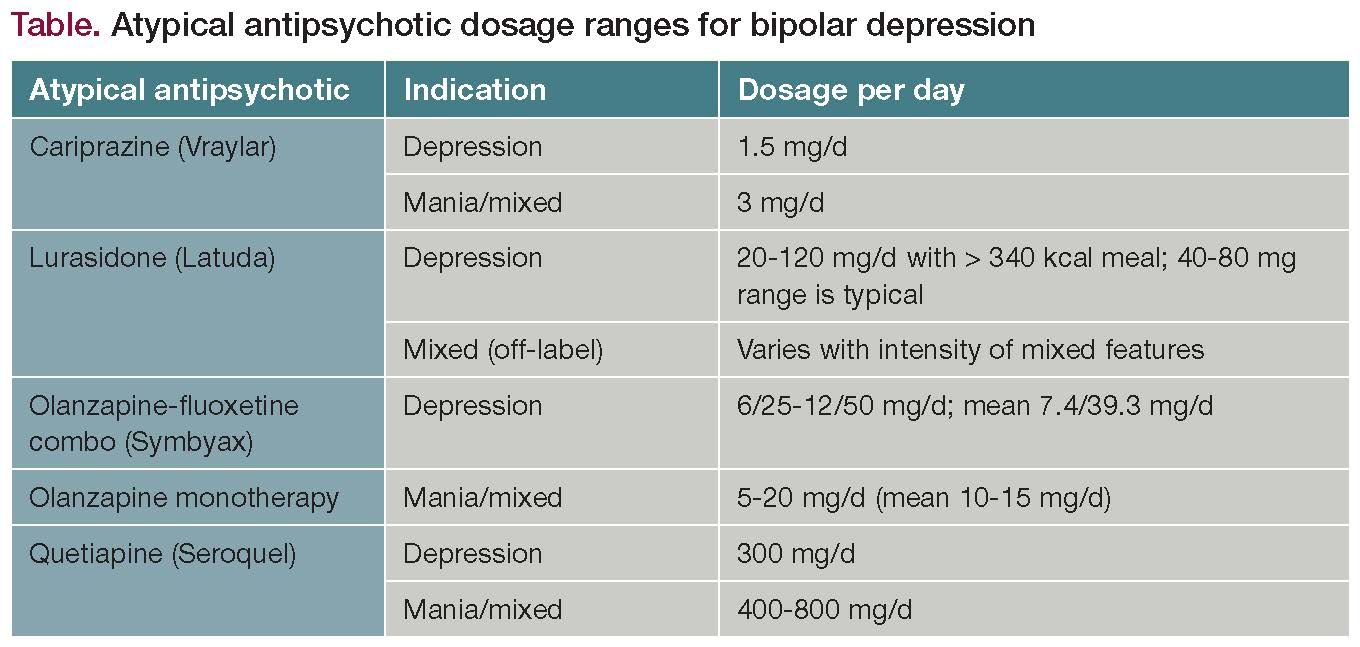Antipsychotic Agents Inhibit Which of the Following Chemicals
The chemical structure of the various antipsychotics allows them to bind to dopamine receptors without triggering the postsynaptic response that the binding of dopamine normally would. Anticholinergic agents inhibit the parasympathetic nervous system resulting in effects on the smooth muscle in the respiratory tract vascular system urinary tract GI tract and pupils of the eyes.

Mechanism Of Action Of Antipsychotic Agents Psychopharmacology Institute
The following paragraphs summarize what is known so far on this topic.

. 2 Antipsychotic drugs decrease psychotic symptoms of hostility agitation and paranoia without causing confusion or sedation. Which of the following types of control agents would be used to achieve sterility. Ko143 007 µM risperidone 381 µM clozapine 420 µM paliperidone 51 µM chlorpromazine 522 µM quetiapine 661 µM olanzapine.
Therefore in an effort to inhibit thetransporter we designed dimers of the. Which of the following statements about side effects of antipsychotics AP is NOT correct. The use of chemical agents directly on exposed body surfaces to destroy or inhibit vegetative pathogens is _____.
IC 50 values were 224 - 42 nM for thioridazine 1003 - 71 nM for perphenazine 1406 - 124 nM for trifluoperazine and 1561 - 281 nM for chloropromazine. They also have in varying degrees M1 Alpha-1 and H1 receptor blockade. Antipsychotics work by increasing or reducing the effects of natural chemicals called neurotransmitters in the brain including.
APs cause inhibition of prolactin secretion. The effects of several antipsychotic drugs including risperidone 9-hydroxy-risperidone paliperidone olanzapine quetiapine clozapine haloperidol and chlorpromazine and a positive control inhibitor Ko143 on functions of BCRP in MCF7 and. How antipsychotic medicines work.
Antimuscarinic activity is seen with some SGAs or their active metabolites may cause anticholinergic symptoms. It is a chemical found in body tissue that protects against environmental factors. Antipsychotic agents inhibit which.
It will consider the following currently available second-generation antipsychotics clozapine risperidone paliperidone olan-zapine quetiapine aripiprazole ziprasidone amisulpride asenapine iloperidone lura-sidone and cariprazine. TRUE 3 Phenothiazine drugs for psychosis block norepinephrine dopamine histamine and serotonin receptors in the brain. Which of the following drugs is used to treat the mania phase of bipolar disorder.
The multidrug resistance transporterP-glycoprotein P-gp is highly expressed in the capillary endothelialcells of the blood-brain barrier BBB where it functions to limitthe brain penetration of many drugs including antipsychotic agentsused to treat schizophrenia. Low-potency APs cause orthostatic hypotension. APs produce menorrhea and increased libido in women.
Its principal action is vascular dilation and contraction of smooth muscles of the respiratory and gastrointestinal tract. The typical antipsychotic agents block D 2 receptors stereoselec-tively for the most part and their binding affinity is very strongly correlated with clinical antipsychotic and extrapyramidal potency Figure 293 bottom. Symptoms indicating that a patient is taking antipsychotic medications including parkinsonism dystonias and tremors.
Our observation that APDs from three separate chemical classes inhibit dynamin and CME could potentially have relevance to the clinical use of these drugs. Antipsychotic drugs. A conventional typical or first-generation antipsychotic is defined by the ability to block dopamine D2 receptors.
Drug repurposing is a well-known method to address the crisis in a time-critical fashion. However the examined reports do not include specific details on their mechanism of action and molecular targets. This is the combined effect of two drugs are equal to the sum effect of the individual drugs 2 2 4 3This is the study of poisons poisoning and adverse drug events 4This is the amount of time required for the amount of drug in the body to decrease by one-half 5.
Its greatest concentration is found in the skin gastrointestinal tract and lungs. Antipsychotics also called neuroleptics are a class of compounds with a high affinity for several subtypes of dopamine receptors. Scrubbing or immersing the skin in chemicals to reduce the numbers of microbes on the skin is _____.
Amoxapine is a widely prescribed antidepressant drug. This is the measure of a drugs ability to produce a biological effect. Following drug treatment EGF-Alexa488 and anti-AP-2-Alexa594 were observed Figure 5B in close proximity at the plasma membrane.
Our findings indicated that the tested antipsychotics rank order of potency of inhibition of BCRP according to concentrations required to reach 50 of maximum inhibition IC50 was as follows. APs produce decreased libido and gynecomastia in men. Chemical structures of the atypical antipsychotic drugs quetiapine and loxapine and their metabolites N-Desalkylquetiapine and amoxapine.
Antidepressants and antipsychotics display antimicrobial activity on a wide range of microbes as reported in Table 1. Antipsychotic drugs APDs have been reported to inhibit DNA replication of hepatitis B virus measles virus germination and HIV infection along with replication of SARS-CoV and MERS-CoV both of which interact with host cells as SARS-CoV-2. All antipsychotic drugs tested competitively inhibited dextromethorphan O-demethylation a selective marker for CYP2D6 in a concentration-dependent manner.
Thioridazine perphenazine trifluoperazine and chlorpromazine blocked hERG potassium channels with the following IC 50 values. Flupenthixol depot Fluphenazine depot Haloperidol. Thioridazine and perphenazine were the most potent with IC50 values 27 and 15 microM that were comparable to that of quinidine 052 microM.

An Overview Of Atypical Antipsychotics For Bipolar Depression

Mechanism Of Action Of Antipsychotic Agents Psychopharmacology Institute

Comments
Post a Comment